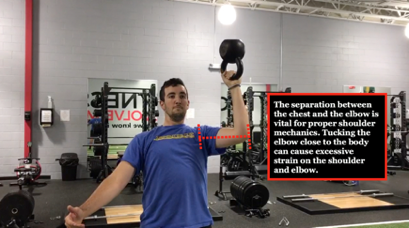Optimizing Sports Performance and Reducing the Chance of Injury
As strength and conditioning professionals have become more prominent in sports, injury rates have actually risen in some cases (About, n.d.; Conte, Camp, and Dines, 2016). A study that analyzed all 8,357 players on the Injured List (formerly known as the Disabled List) in Major League Baseball (MLB) from 1998 to 2015 found a steady increase over this time from 387 players on the Injured List in the year 1998 to 536 players on the Injured List in the year 2015, which is a net increase of 149 players or 38.5 percent (Conte, Camp, and Dines, 2016). This increase comes with an even greater focus on aspects such as pitch counts to limit the workloads of athletes (Lyman, Fleisig, Andrews, and Osinski, 2002; Gartheeban and Guttag, 2013). The top-four injuries over this 17-year period included upper body injuries to the shoulder, arm/elbow, chest/back/spine, and wrist/hand/fingers. The mean cost for replacing the injured players during this timeframe was $423,267,633.78 per year (Conte, Camp, and Dines, 2016). Even though there is a correlation between the increase in MLB strength coaches and injuries in the MLB this does not guarantee that there is a direct connection between the two variables, however it is a disappointing coincidence.
Strength and conditioning coaches want to aid an athlete so that the athlete can optimize their athletic performance while becoming more resilient to injury (Durell, Pujol, & Barnes, 2003). No matter how much weight an athlete can lift in the weight room it needs to translate to their performance in their sport or else there would be little reasoning to support why the athlete would participate in weight training. It has long been proven that resistance training can increase strength and improve sprinting velocity, however the variety of resistance training exercises selected need to be specified based on the athlete’s individual needs in their sport, and just as important is the technique that is used to perform these exercises (Hori, Newton, Nosaka, and Stone, 2005).
Proper exercise selection and proper technique are needed when performing resistance training exercises in order to minimize the risk of injury that can occur during the athlete’s sport. It is important to keep in mind that the movements we train our body to perform in the weight room translate to how our body moves in our sport. For example, if I am training a baseball pitcher and allowing them to perform a dumbbell shoulder press with poor technique by tucking their elbow too close to their body or by neglecting to emphasize the eccentric phase of the movement then this can put undue stress on their elbow and shoulder while training their body to have improper shoulder mechanics. This may negatively alter their throwing pattern which overtime may likely put excessive wear and tear on the connective tissue surrounding their joints. To fix this I would need to teach the athlete proper elbow positioning on their shoulder presses, possibly by utilizing a different implement such as a kettlebell to promote better stability, and focus on emphasizing the eccentric phase to allow the athlete’s body to find their optimal shoulder and elbow positioning as shown in Figure 1 below. From my own coaching experiences I have seen that implementing this proper technique has benefit in both improving shoulder health and throwing velocity.
Figure 1: Elbow Positioning During a Shoulder Press
Utilizing a dumbbell or a kettlebell may be ideal for a baseball pitcher due to a dumbbell or kettlebell allowing us to have increased shoulder mobility during the movement, as opposed to the use of a barbell which will keep our shoulders in a more fixed path during the movement. This is where an understanding of the unique demands required of a specific athlete come into play. If we were coaching a football offensive lineman then we would not be as concerned with the athlete’s shoulder mobility due to the demands of an offensive lineman’s shoulders during a football game, thus we could still perform a proper barbell shoulder press with this specific population without being as concerned with an increased risk of injury during a game. However, due to the unique nature of throwing a baseball, and the physical requirements demanded of the shoulder during this movement, it would be of greater benefit to the baseball pitcher to strengthen their shoulders through utilizing a dumbbell or kettlebell when shoulder pressing. This is because lifting a dumbbell or kettlebell will be more therapeutic on the shoulder joint due to the more natural movement pattern the athlete can go through when holding a dumbbell or a kettlebell versus the more fixed movement pattern they would go through if their hands were holding a barbell.
In addition, it is important to recognize that a major component of treating each athlete as an individual pertains to both the physical and mental aspects of development. As a coach, you can simply provide direction to an athlete where you tell them what to do, or you can provide proper instruction to communicate to each individual athlete both how to do an exercise and why it will benefit them in their sport (LaPlaca and McCullick, 2018). Getting to know the athlete and understand what their goals are, what motivates them, and even get to know more about the athlete outside of their sport can allow us as coaches to relate to the athlete and provide us with the information needed to help each individual athlete become the best that they are capable of becoming (Gyllensten and Palmer, 2007).
Reference
David LaPlaca, PhD, RSCC

